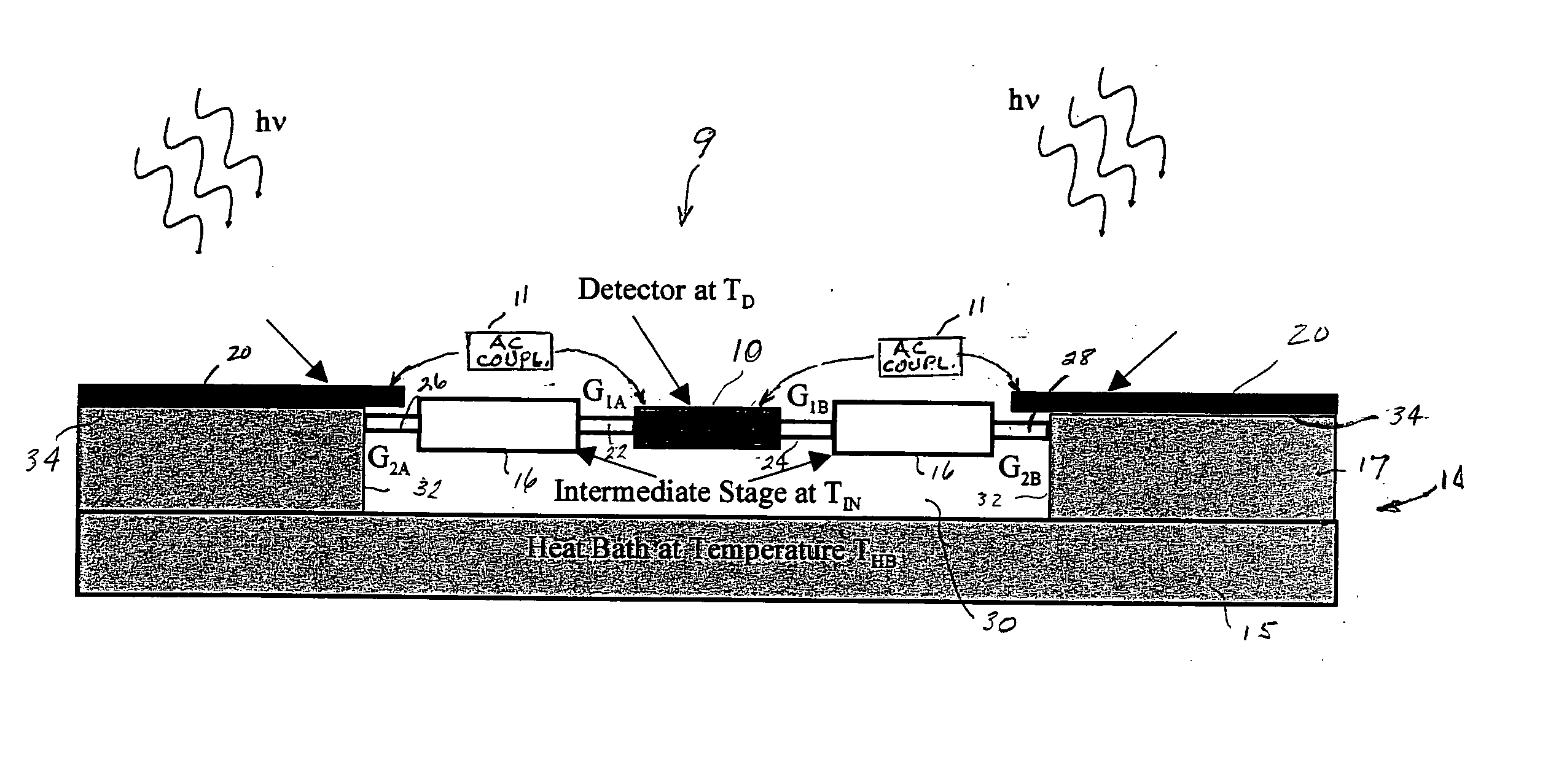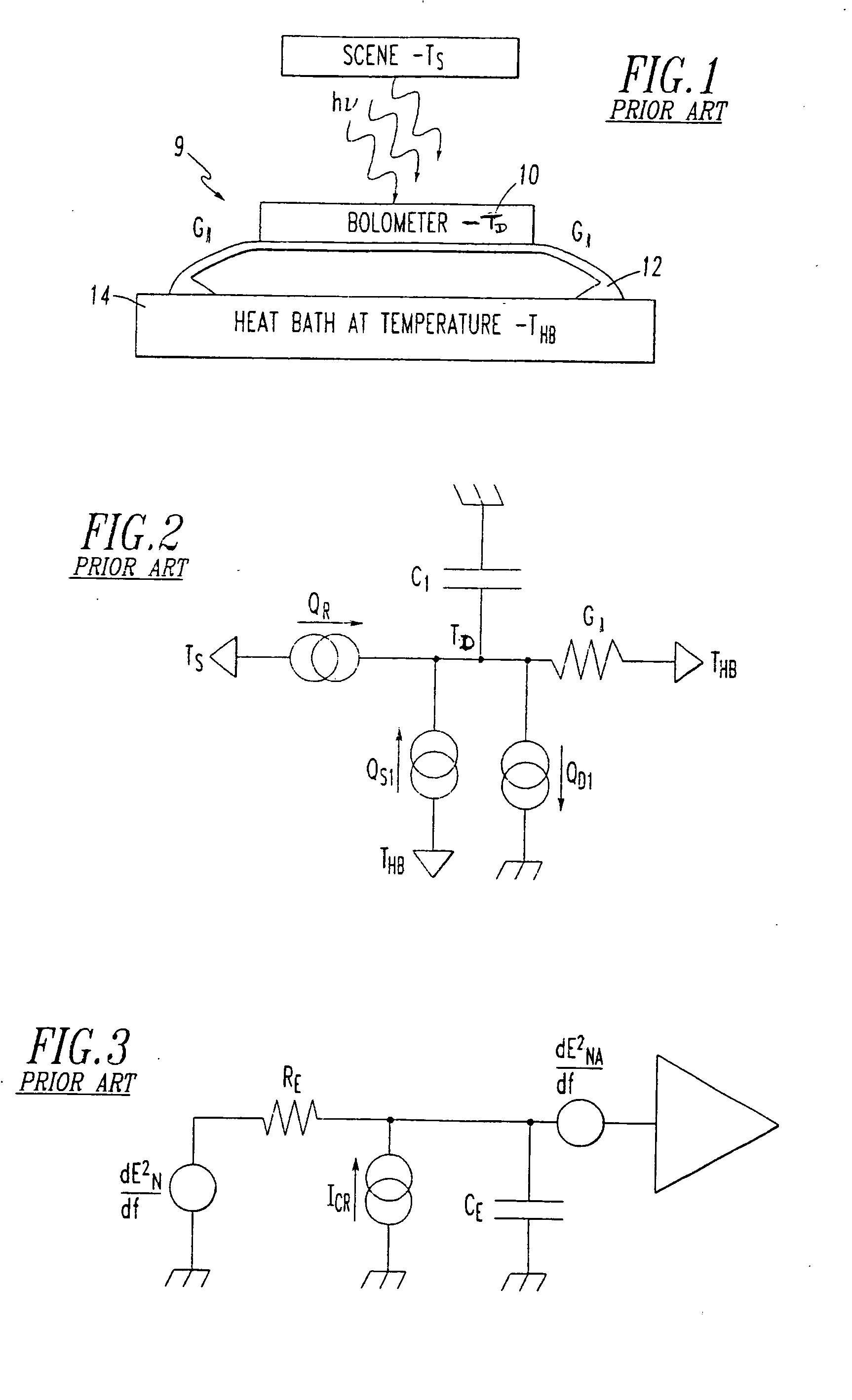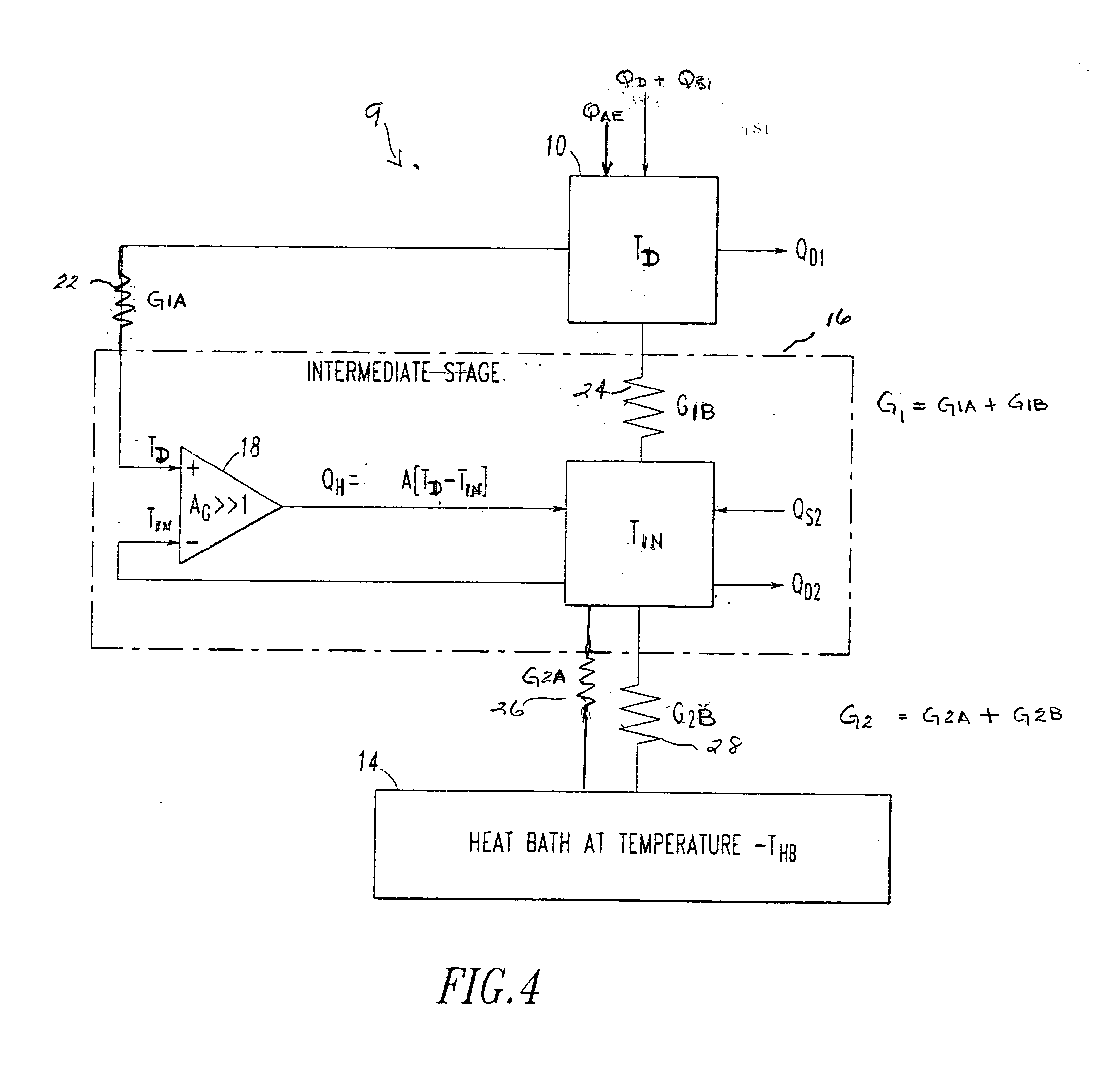Ultra sensitive silicon sensor millimeter wave passive imager
a passive imager and ultra-sensitive technology, applied in the field of bolometer type sensors, can solve the problems of less performance than quantum detectors, less sensitive bolometers, and reduced slow speed limitation, so as to maximize the sensitivity of the absorber element and reduce the thermal conductivity
- Summary
- Abstract
- Description
- Claims
- Application Information
AI Technical Summary
Benefits of technology
Problems solved by technology
Method used
Image
Examples
Embodiment Construction
[0026] With improved thermal isolation, performance of bolometers will directly improve and thereby open a wider range of applications, such as the application of bolometers as passive millimeter (MM) wave staring imagers. Accordingly, means are now presented for greatly improving the thermal isolation in bolometers. This requires within each bolometer pixel, the zeroing of the thermal conductance of an MM pixel between the detector and its mechanical support and readout structures. Achieving improved thermal isolation to the radiation limit will lead to at least a ten-fold improvement in performance. Zeroing the thermal conductance associated with the mechanical support and readout structures is achieved in the subject invention by introducing an improved intermediate stage and electrical-thermal feedback over that shown and described in U.S. Pat. No. 6,489,615 which vary the temperature of the intermediate stage to track changes in the detector's temperature thereby zeroing the ne...
PUM
 Login to View More
Login to View More Abstract
Description
Claims
Application Information
 Login to View More
Login to View More - R&D
- Intellectual Property
- Life Sciences
- Materials
- Tech Scout
- Unparalleled Data Quality
- Higher Quality Content
- 60% Fewer Hallucinations
Browse by: Latest US Patents, China's latest patents, Technical Efficacy Thesaurus, Application Domain, Technology Topic, Popular Technical Reports.
© 2025 PatSnap. All rights reserved.Legal|Privacy policy|Modern Slavery Act Transparency Statement|Sitemap|About US| Contact US: help@patsnap.com



